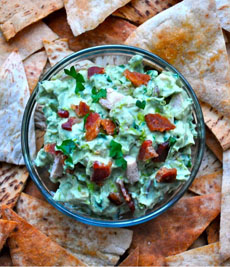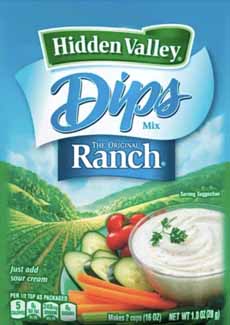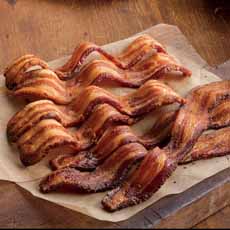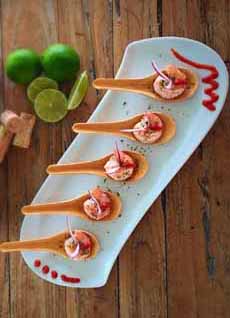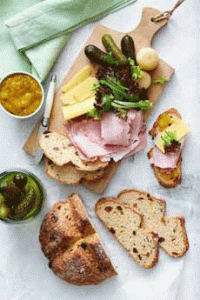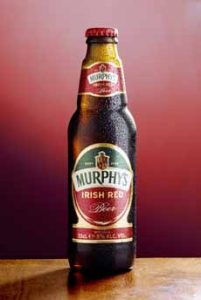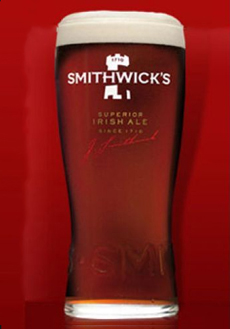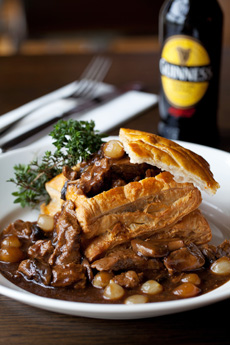|
March 17th, St. Patrick’s Day, is National Corned Beef & Cabbage Day.
Corned beef and cabbage is a St. Patrick’s Day standard. But wait: The dish isn’t from Ireland, but from New York City’s Lower East Side.
WHAT IS CORNED BEEF?
Although the exact beginnings of corned beef are lost to history, it most likely was created when people began preserving meat through salt-curing—an ancient practice.
Is There Corn? No.
Corning refers to curing or pickling the meat in a seasoned brine. The word refers to the “corns” or grains of rock salt (today, kosher salt is used) that are mixed with water to make the brine. (Curing meat and fish with salt was an ancient practice in numerous cultures.)
Typically, brisket is used to make corned beef. Brisket is a cut of meat from the breast or lower chest of the cow (photo #2)
The dish has many regional variations and seasonings. Smoking a corned beef and adding extra spices produces pastrami.
THE HISTORY OF CORNED BEEF & CABBAGE
Historically, cattle in Ireland were not used for meat but for dairy products. Pork, affordable, was the predominant meat.
It wasn’t until England’s 16th century conquering of Ireland that the cow became a meat animal—but its availability was limited to the Irish population because of the cost.
Then came the massive migration of Irish, Jewish, and other populations from Europe to the U.S.
Corned beef was a staple in middle-European Jewish cuisine. Irish immigrants learned about corned beef from their Jewish neighbors on New York’s Lower East Side.
They adopted it as a cheaper alternative to imported Irish bacon. (Irish bacon is a lean, smoked pork loin similar to Canadian bacon. Here are the different types of bacon.)
In the U.S., pork was much more expensive than the American staple meat, beef. Brisket, which required several hours of cooking to tenderize, was an affordable cut.
Bacon and cabbage is a popular Irish dish, so the marriage was made:
Irish Americans substituted corned beef for the bacon, and Corned Beef & Cabbage was born (photo #3).
MORE CORNED BEEF RECIPES
Corned Beef & Cabbage Broth Bowl
Corned Beef & Cabbage Egg Rolls
Corned Beef & Cabbage Potato Salad
Corned Beef & Cabbage Tacos (photo #3)
Corned Beef & Cabbage Sandwich
Corned Beef & Mashed Sweet Potato Tart
Corned Beef & Shamrock Appetizers
Corned Beef Hash “Eggs Benedict”
Corned Beef Hash Patties With Eggs
Corned Beef With A Cabbage Casserole
Guinness-Marinated Corned Beef & Cabbage
Slow Cooker Corned Beef & Cabbage Recipe
|
|

[1] Corned beef and cabbage with potatoes and Irish soda bread (photo © Chef Eric LeVine).
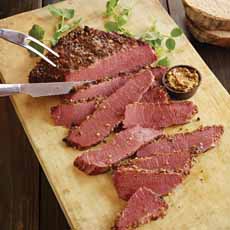
[2] A brisket, transformed with into corned beef (photo © Omaha Steaks).
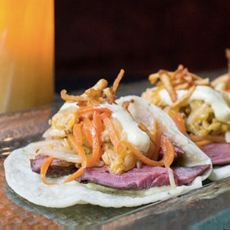
[3] One idea for leftovers: corned beef and cabbage tacos. See the other recipes below (photo © Tortilla Factory).
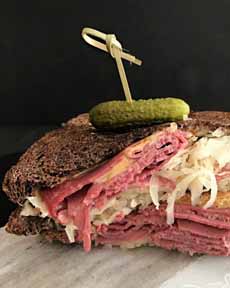
[4] Make a Reuben sandwich with leftovers. Since cole slaw is grated cabbage, dice the leftover cabbage and mix with mayo, shredded carrots, diced onions, vinegar, mustard, celery salt, and a pinch of sugar (photo © An Affair From The Heart).
|




